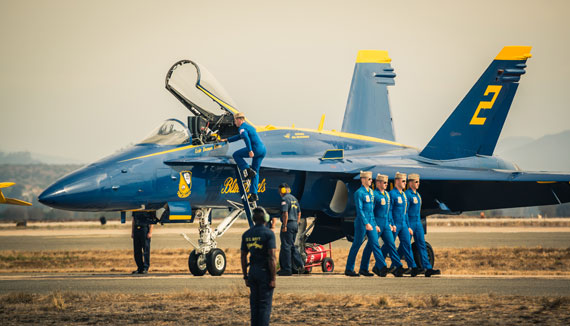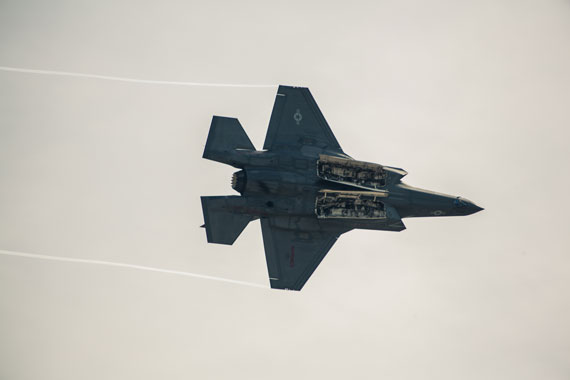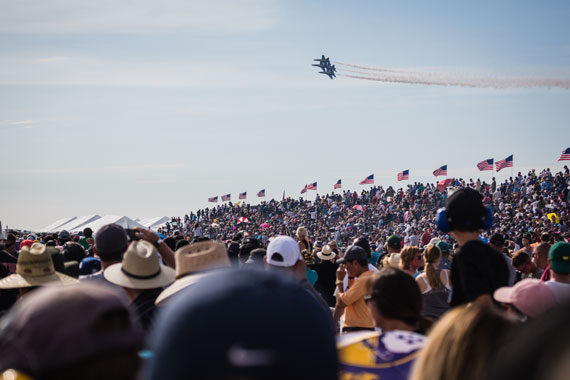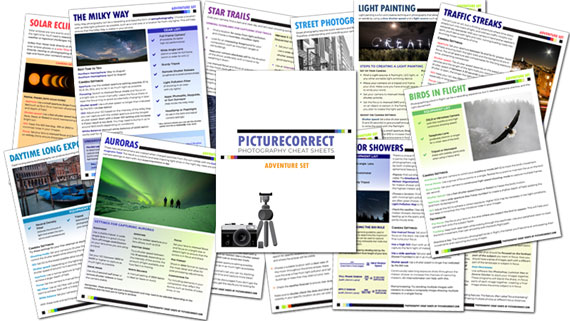Visiting airshows is an exciting experience. No matter what age group you fall in, the thrill and the excitement really gets you. And as photographers, it is a great opportunity to take some action-packed shots.
Some actions happen in the blink of an eye during airshows. So, preparedness is key when photographing those jets flying at 500 miles an hour. However, there’s often some static displays that happen on the ground as well. So, keep your eyes out. While gear is important, there are other factors too that you should consider to take the best images possible.
Also just a quick reminder, for a “Airshow Camera Settings” cheat sheet and more, you may want to check out today’s sale on the Photography Adventure Cheat Sheets (80% Off)

Preparation
Before we jump on to the photography tips, it is important to dwell on some important points to prepare yourself when visiting airshows.
- Airshows need good weather. This usually means it can get sunny and hot. Get yourself a hat or an umbrella, sunglasses, and water to keep yourself hydrated. And don’t forget your sunscreen. You don’t want to go back home with sunburns.
- Carry a pair of earplugs in case you come to decide that the sound of the jets screaming is not for you.
- Try to arrive at the airshow at least an hour earlier. While this will help you in getting a space to park easily, you’ll also get a sense of the location you’ll be shooting in. As always, the closer you can get to the action the better, so try getting a spot towards the front. Show centers are the best.
Gear for Airshow Photography
Well yes, you can take good photos with a point and shoot camera, and a smartphone too but they have their own limitations. Let’s see what gears you can use to take some pro-grade airshow photos.
- Camera: A camera with a good auto-focus system can help a lot here. Cameras with auto-focus points spread across the frame, and with good subject tracking ability are great to have. Some photographers even try to carry two camera bodies to avoid swapping lenses.
- Lens: A good telephoto lens is the most useful here. For a full frame camera, something in the range of 400mm works great. And for crop-sensor cameras, 300mm is a good focal length to have. But, you will be able to witness some interesting stuff in the ground not too far away as well. So, it can be helpful to have a lens that covers the shorter end too. If carrying two bodies is not an option, get a versatile lens like a 70-300mm or something similar. And avoid manual lenses for air shows. They’ll frustrate you more than you can imagine.
- Tripods and monopods: I find that using tripods or monopods restricts your movement in a fast working environment like an airshow. The crafts and the jets have an erratic movement and you need to be as free as possible to get them in your frame. Avoid using a tripod or a monopod if you can. But if you must, use a system that is smooth to maneuver around, and something that you are comfortable using.
- Memory cards and batteries: Believe me, you’ll be taking a lot of photos, and most of them in continuous bursts. This can drain your battery and fill up your memory card pretty quickly. And since you’ll be in the field for a good part of the day, make sure to carry sufficient spare batteries and memory cards.
Shooting Tips for Airshow Photography
Focus mode: For stationary ground activities with not much of movement, you’ll be fine using the single servo mode (AF-S). But, in order to track the airplanes when they’re flying use the continuous mode (AF-C). This will ensure that the subject is in focus even when it’s moving around.
Drive mode: There will be moments when the airplanes demonstrate some brilliant stunts. Be sure to capture the moment from the beginning till the end. You can do so by setting your camera to high speed burst mode. This allows your camera to record a series of photos while you keep the shutter release button pressed.
Shutter speed: If any doubt, start on the faster end of the shutter speed spectrum. What shutter speed you want to use depends on what subject you’re photographing. If it is the jets, use a minimum of 1/1000s to freeze it and get a sharp image. If you notice some motion blur, go even faster, and bump up that ISO if you need to. But, if it is the choppers or the rotorcraft and propeller-driven aircrafts that you’re shooting, go for 1/125s or slower. This ensures that you capture the motion of the rotors and adds a dynamic feel to the image.
Aperture: When working with a fast shutter speed, you need to allow a good amount of light to enter the camera. So, set your aperture to the lens’ widest setting. Depending on what lens you’re using, it could be f/2.8, f/4 or something similar. When shooting the subjects at a great distance, you don’t need to worry about the depth of field anyways.
Metering: Since you will be shooting against a bright sky/clouds as your backdrop, chances that your camera will get confused are high. In this case, center-weighted metering mode will ensure that you get a proper exposure on the airplanes. But, if you notice that exposing the subject blows the background out, better go with a slightly underexposed subject and recover the shadows in post.
Be sure that you take a moment to enjoy the show with your eyes directly, and not only through the viewfinder. Airshows are truly amazing.
For a Cheat Sheet on this Subject and More:
Have you ever wanted to photograph an amazing once-in-a-lifetime moment but missed the shot? This new set of Photography Adventure Cheat Sheets have you covered. With camera settings and critical information on the most challenging photography situations, you’ll never be unprepared again. They are currently 80% off which ends soon if you want to check them out.
The perfect companion for any photographer. Print one out whenever you need it. Whether you’re going on vacation or seeking out a specific photography adventure, these cheat sheets can provide you with the knowledge and inspiration you need to create your best work yet.
Deal ending soon: The Photography Adventure Cheat Sheets at 80% Off
Like This Article?
Don't Miss The Next One!
Join over 100,000 photographers of all experience levels who receive our free photography tips and articles to stay current:








